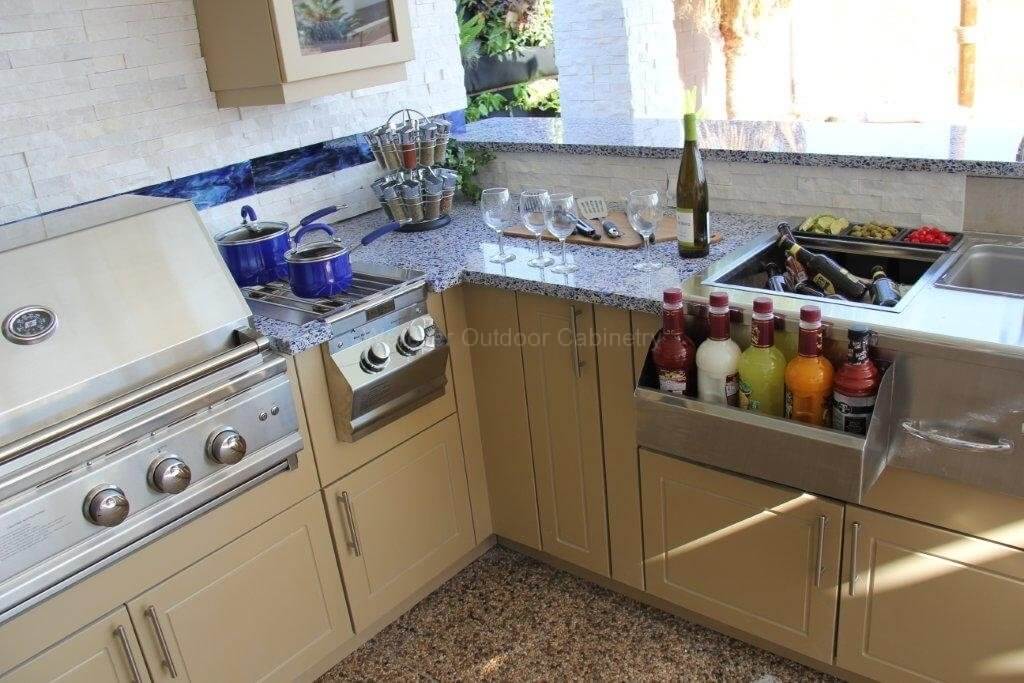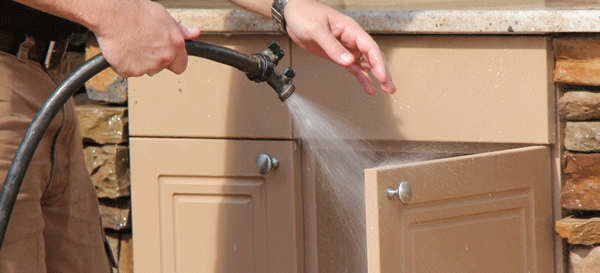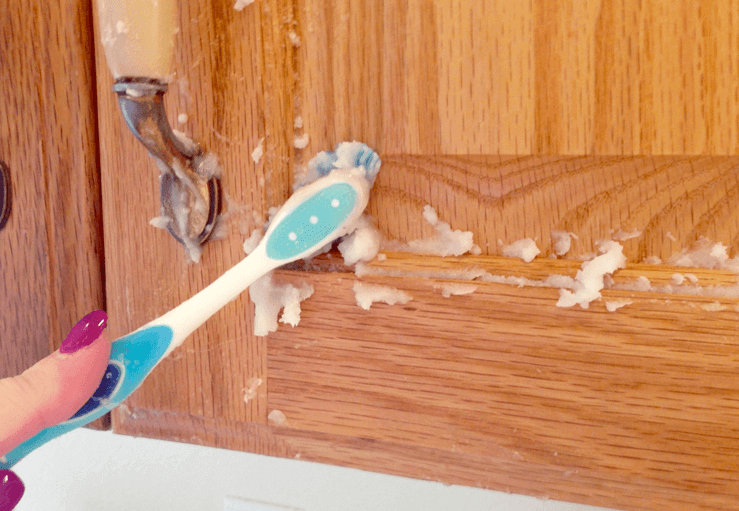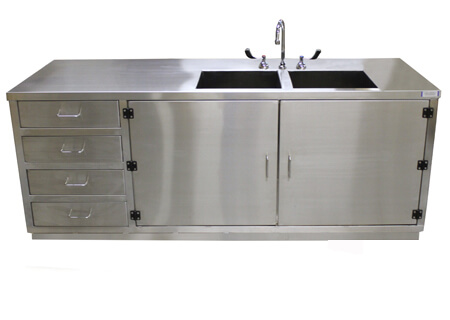A family’s house with a very busy outdoor cooking area brings us the joy of homemade meals but also a high risk of getting stain on your kitchen cabinets. Regardless of your cabinets’ color, we have some tips that will help you keep your outdoor kitchen shining for a long time.
Since we cannot avoid eventual “sauce-like accidents” on the kitchen cabinets (especially if you have kids) nor will the cabinetry scape from a grimy look over time calling for a deep cleaning, it’s important to understand the material of your cabinetry and therefore to offering the best care:

HDPE (High-Density Polyethylene)
As a consequence,

Wood
You will need to revarnish or repaint your wood cabinetry from time to time. Nevertheless, there are some cleaning techniques that will still require extra time and effort but will make the hard work a little easier.
Grime builds up quickly on kitchen cabinet doors, especially around the handles. If your regular cleaning with mild dishwashing liquid and water is not preventing the grime to build up, a paste of 1 part coconut oil and two parts of baking soda might help on the process.

However, if you have painted wood cabinets, do not apply oil to it. The oil will not penetrate the finish and will attract dust and grime, according to Martha Stuart’s specialists.
Stainless Steel
Stainless steel cabinets rely on regular application of a protective lubricating coating to the metal. If you overlook the regular application of these protectants, the metal will damage and stains will be inevitable.


Special Considerations: Always wipe in the same direction as the grain. Water stains can be treated with a commercial stainless-steel spray. Stainless steel with a smooth finish shows watermarks and fingerprints more than stainless with a brushed finish. Although stainless is durable, it will scratch and dent. Superficial scratches can be polished out with a light-duty (white) nylon pad. It’s essential that you polish with the grain; polishing against it will create more damage. Dents are usually not repairable; as consequence, you will need to replace the entire cabinet door.
PVC
PVC or polyvinyl chloride is a cheaper raw material than HDPE, especially when it is air-injected. It does not meet the performance of HDPE, therefore is susceptible to staining. It is a weaker polymer that can warp and must be painted for sun protection. PVC is also known for its environmental impacts affecting also people’s health, nevertheless, the cheap price of the cabinetry won’t compensate for the negative impact in your family. See below the ‘stain test’ video comparing HDPE versus PVC.
Investing in top quality HDPE outdoor kitchen cabinets is the best way to guarantee a stain-free look in your cooking area.
